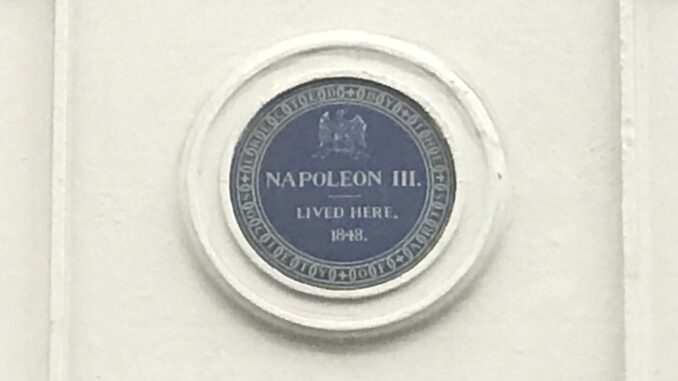
One of the underappreciated glories of London is the Blue Plaque scheme, the commemoration with 19” (48cm) ceramic discs of the places associated with history’s great and good, or of significant events in our past.
Now run by English Heritage, the original plaques were erected by the Society of Arts, then by the London County Council and its successor the Greater London Council. There are over 900 examples across the capital; the vast majority – 80%+ – honour men, and English Heritage is trying to chip away at this gender imbalance with its more recent installations.
Other schemes are available, with many local authorities erecting their own, and various societies also getting in on the act, but the English Heritage plaques are the most prestigious and seem to have the toughest selection criteria.
Although a standard design has been in use since 1938, previous plaques were not necessarily blue, nor necessarily circles. Green, brown and cream feature, as does cast iron, and squares and rectangles were frequently used.
And the oldest surviving plaque? That can be seen at 1c King Street, SW1 where a Minton ceramic blue disc was put up in 1867 to Louis Napoleon, nephew of the famous Corsican and, as Napoleon III, the last monarch of France.
A serial coupiste, he fled to England and lived in King Street after one of his botched attempts to seize power and his escape from a French prison. In 1848 he returned to France and was elected President of the 2nd Republic, then in 1852 led a (this time successful) coup that installed him as Emperor.
Also in 1867, but just predating Napoleon III, the first plaque of all was to the poet Lord Byron, although this lasted barely 20 years as the house on which it was placed was demolished in 1889.
These days plaques are only considered when twenty years have passed since the nominee’s death (Louis is uniquely the only person to be honoured during his lifetime). Other rules include the memorials only going on the actual building in which the person lived – there are no more “X lived on a house on this site”, and although Gandhi has two plaques, and Palmerstone, Gladstone and Thackeray three, it is now strictly a case of ‘one plaque per person’.
There is a searchable list of all 900+ English Heritage plaques on their website, and you’ll find my blog posts about specific individuals here.
